BraapAcademy.com earns a small commission from qualifying purchases.
This does NOT cost you extra.
Contents
While there are plenty of people (I’m guilty as well) that ride their dirt bikes with tires that just “feel right,” there is a SURPRISING difference that running the correct tire pressure can make. On top of that, dirt bike tires aren’t designed to be as safe (or effective) as intended when just a couple of pounds of pressure are missing.
So then, what tire pressure is recommended for dirt bikes?
Most dirt bike tires should run at 12 psi. If you’re off by just a few pounds, the bike will not be as safe – or handle as well. However, you can run most tires between 8 psi to 16 psi.
Think about it like this – with a car tire that requires between 30 – 40 psi you really aren’t running a huge risk if you’re down or up a few pounds of pressure. Because, 33 psi or 37 psi on car tires rated at 35 psi won’t hurt you all that much.
With a dirt bike tire, though, the loss or gain of a couple of extra pounds of pressure is significant.
As mentioned, the overwhelming majority of dirt bike tires out there today are designed to be run with 11 – 13 psi.
This is especially true if you are going to be taking your bike off-road (I’m pretty sure you will be), but it is still important if you’re running your dirt bike on a flat track or on pavement.
With off-road riding, the higher pressure isn’t as much about the overall speed as it is about preventing flats. A harder tire is a lot more resistant against damage and flats than a soft one. A softer tire (8 psi, for example) can be easier to puncture than a harder tire in same situation.
A harder tire is a lot more resistant against damage and flats than a soft one. A softer tire (8 psi, for example) can be easier to puncture than a harder tire in same situation.
Also, traction. Duh.
The tire pressure for dirt bike tires should be set based on the terrain you’re going to be riding on. This is what will determine whether you are able to really hook up, or not.
Hard pack and flat track riders regularly bump it up to a front tire pressure of 13 – 14 psi.
Just remember, if you are humming along on a flat track, and the temperature outside is pretty hot, your tire pressure may climb.
If you are running on sand or soft tracks/terrain it isn’t a bad idea to drop your front tire to 11 psi and your rear tire to 11 or 12 psi.
You will hook up (front and rear) a lot better than you’d expect.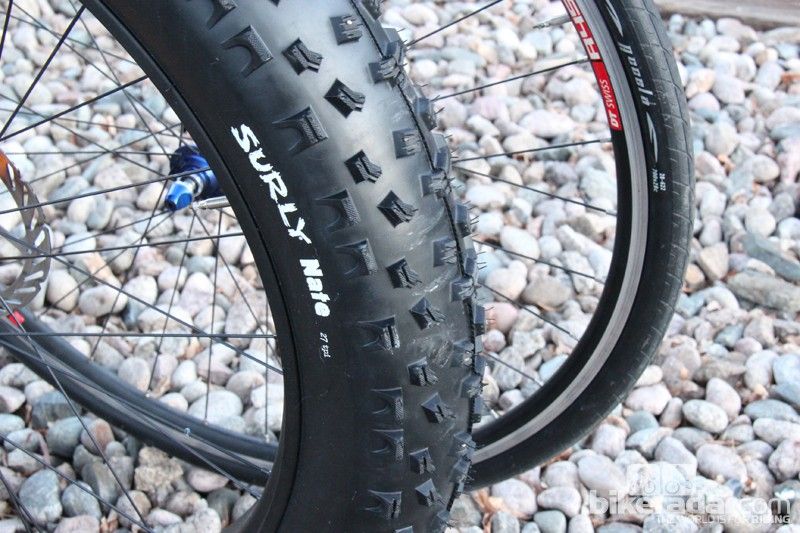
This one gets tricky. But again, it basically just depends on the type of terrain the majority of the trails are going to be ridden on.
Also, time of year plays an important determining factor.
For the most part, I recommend the go-to 12 psi, and then you can go from there. This will cover the basis and you can get a feel for the bike and how it handles while you’re out.
Trial tires can sometimes be dialed all the way down to between 5 psi and 6 psi. However, it’s important to remember that these kinds of tires are quite literally the ONLY kind of tires out there for off-road purposes that are specifically designed to be run this low.
It’s also important to remember that these trial tires need to be fitted perfectly on tubeless trial style rims to be effective.
If you’re not running the right wheel and tire set up you’re going to be in a world of hurt if you try to keep 5 to 6 psi going.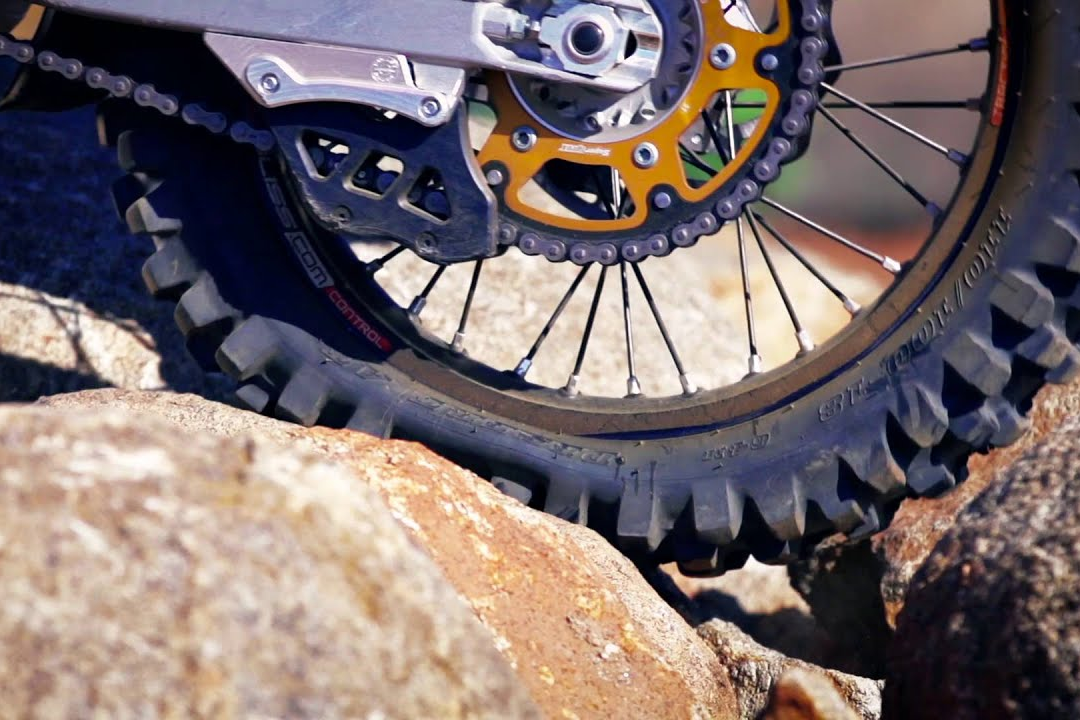
Tires that have heavy duty inner tubes can be run a little flatter and a little softer if you’re looking to maximize your grip. However, you want to make sure that you are keeping your speeds a bit lower.
Also, you shouldn’t try to run too hard and too fast on heavy tubes that have only been filled between 8 and 10 psi.
Pressure ratings of between 15 and 16 psi are really best used exclusively in the world of enduro and with FIM and DOT approved knobby tires.
Anything that goes above 16 psi should only be used with tires that are specifically designed for on-road purposes. Usually the kinds of tires that are going to be used on and off-road will be on dual-sport bikes.
Tire pressure is something you are going to want to check regularly. Before you head out to ride, you should quickly check your dirt bike’s tire pressure.
It’s a good idea to have a quick check of your tire pressure when you’re fueling up (with the best gas only, of course) or when you are warming up your dirt bike.
You should check your tire pressure to see if you’re running too high or too low for the tires you have on the bike, and for the conditions and terrain you are about to tackle.
There are several tools to do so, and it’s easy. Here’s a fancy one I like for dirt bikes…
Check out (and read reviews) on Amazon
If you are a little high (really warm temperatures can crank things up faster than you might think) it’s a good idea to let air out, and if you are a little low it’s not a bad idea to pump things up.
If you do need to fill up your tires a little more, it’s important to make sure that you have total control over the air.
Many tire pumps out there are great when you have to fill large, auto tires up to 30 or 40 psi, but they can be a bit overkill when you’re looking to tackle something like a dirt bike tire.
At the same time, you don’t necessarily need to spend a ton of money on some fancy tire pump made for dirt bikes to get great results.
Believe it or not, your everyday bicycle pumps (I use one like this) and hand pumps are going to do just as good a job as those much more expensive options – all while giving you a quick, effective, and totally controllable tool that lets you dial in pressure levels perfectly.
NOTE: this isn’t 100% related, but still cool… once you get the PSI settings you’re looking for, check out our blog post on these cool spoke skins for your dirt bike. They’re a cheap way to make your rims/bike look quite a bit cooler. Very important stuff. 😉
As an Amazon Associate DirtBikePlanet.com earns from qualifying purchases.
When I first got my dirt bike, I had no idea what I should inflate the tires to. I searched all over the internet and everyone had a different answer.
This post is my simple guide to setting the correct tire pressure on your dirt bike.
Generally, the tire pressure on a dirt bike should be between 6 and 18 psi with a traditional tire.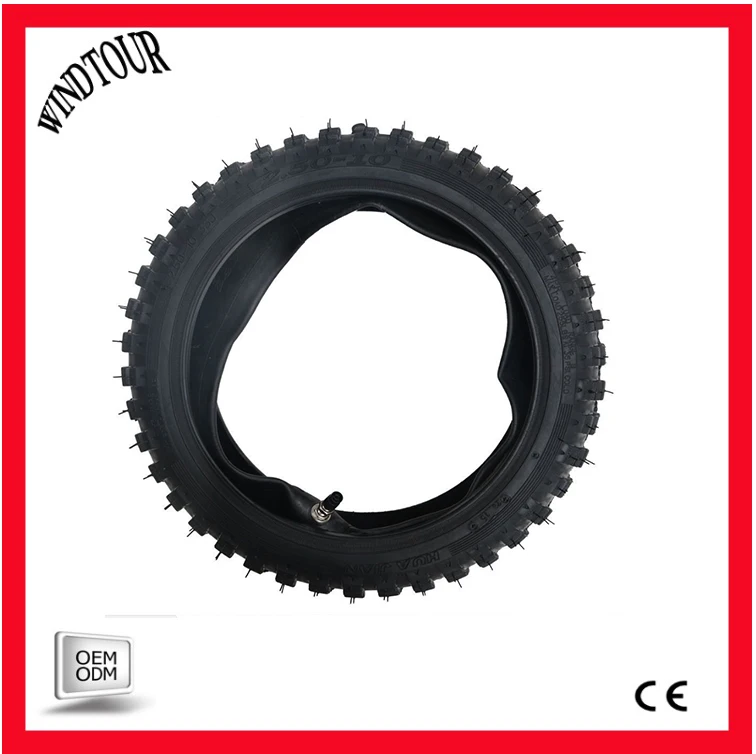 The most common tire pressure that avid dirt bike riders recommend is 12psi. If you’re an average rider on an average bike riding on average terrain, set your tire pressure to 12psi and forget about the rest of this article. However, if you want to customize your tire pressure perfectly to suit you and your riding style, then read on the for the full story.
The most common tire pressure that avid dirt bike riders recommend is 12psi. If you’re an average rider on an average bike riding on average terrain, set your tire pressure to 12psi and forget about the rest of this article. However, if you want to customize your tire pressure perfectly to suit you and your riding style, then read on the for the full story.
There are a lot of caveats to the general rule of 12psi, and it’s a not the right setting for all situations, so please do take the time to read about some of the nuances to that guidance below.
It may seem obsessive to change the tire pressure one psi up or down and expect much of a change, but even small changes in tire pressure make a difference. If you think about it, 2 psi difference is a 20% change in the tire pressure.
Benefits of Higher Tire Pressure:
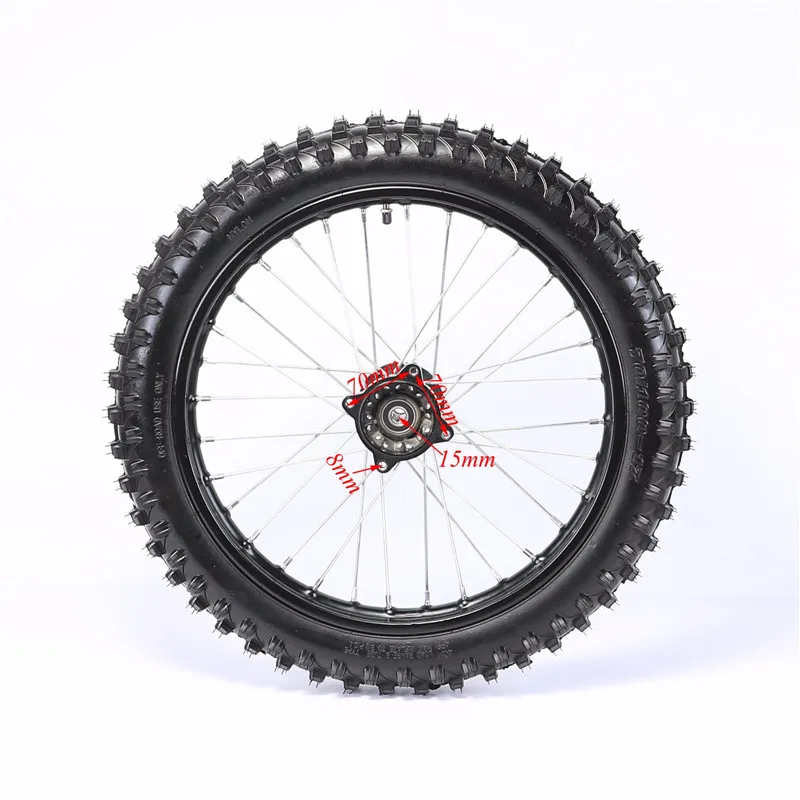 If you ride in Moab or other areas where you’ll be hitting lots of tree roots and hard sharp rocks during an off-road ride, then go up to 15psi.
If you ride in Moab or other areas where you’ll be hitting lots of tree roots and hard sharp rocks during an off-road ride, then go up to 15psi.Benefits of Lower Tire Pressure:
If you use the cheapo tire pressure gauge that you use on your car tires, you’re very unlikely to get a good reading.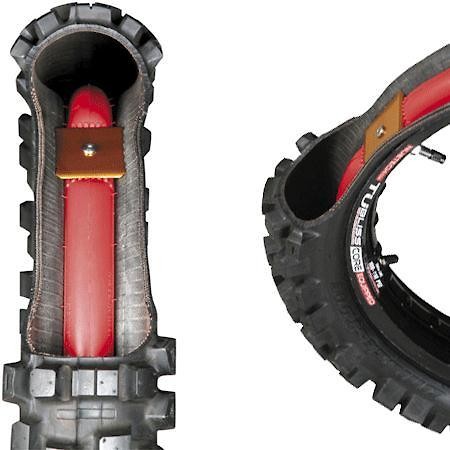 Tire pressures in cars go much higher than on a dirt bike, so the gauge shows a more coarse scale. You can’t tell the difference between 10 and 11 psi on most gauges.
Tire pressures in cars go much higher than on a dirt bike, so the gauge shows a more coarse scale. You can’t tell the difference between 10 and 11 psi on most gauges.
I highly recommend you just get the JACO Elite Pro Pressure Gauge on Amazon.com. It’s really cheap and it’s meant for dirt bike tires so it clearly shows your psi down to the half-pound.
For pumping your tires, you can use something as simple as a little bike tire pump. It’ll work just fine. However, that ceases to work well at the high psi’s needed if you ever move to a Tubliss system, or you just want something nicer so you can see the psi as you’re inflating.
The tire pump (compressor) I got is the one from Slime (same company as the green goop in bike tires). Their compressor says it can go up to 150psi. Now TONS of compressors claim they can do that, and none of them can that I’ve tried. However, the Slime goes plenty high enough for a dirt bike tire. It can realistically inflate to 105 psi.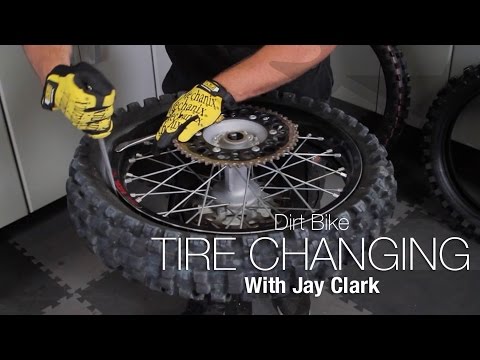 You can get it on Amazon.com.
You can get it on Amazon.com.
Some riders like to set the tire of the rear and front tires at different psi levels.
For example, when riding very fast and hard in a motocross race, the rear tire will heat up. The heat also increases the pressure in the tire. So some riders will set the rear wheel at a lower psi than the front tire to compensate for how the tire will behave during the race once its warm.
Tire pressure has a lot to do with the number of punctures you get in your tires. Generally, a higher tire pressure will help to prevent flats. This is because the tire compresses less when it hits hard objects and thus they are more likely to bounce off.
However, too high of a tire pressure can have issues of its own.
Tubliss is another option for preventing punctures. This system has a small insert tube inside the rim that is set to an extremely high psi to prevent damage to the rims and lock the tire to the rim. Then there is a larger outer area where there is no tube at all, and thus no possibility for pinch flats. This area can be set to a very low psi for better traction. Punctures are still possible, but there is a cool system for quickly filling them.
Then there is a larger outer area where there is no tube at all, and thus no possibility for pinch flats. This area can be set to a very low psi for better traction. Punctures are still possible, but there is a cool system for quickly filling them.
Another option for preventing punctures is a mousse. They are cheap and they make it impossible to get any type of flat. However, they are very heavy, and they only last 6 months.
If the tire pressure is too low when you’re riding, you may notice a few things that will tell you that you should increase your tire pressure for the style of riding you do. For example, if you feel the bike does not tightly corner, or you feel a loose wobble in the tire at medium speeds, then you’d know you’re too low. The reduced cornering ability is due to the tire roll. Another dead giveaway would be if you see your rims starting to get bent or dinged up, but before that happens you will likely feel it when out riding and your rims hit hard.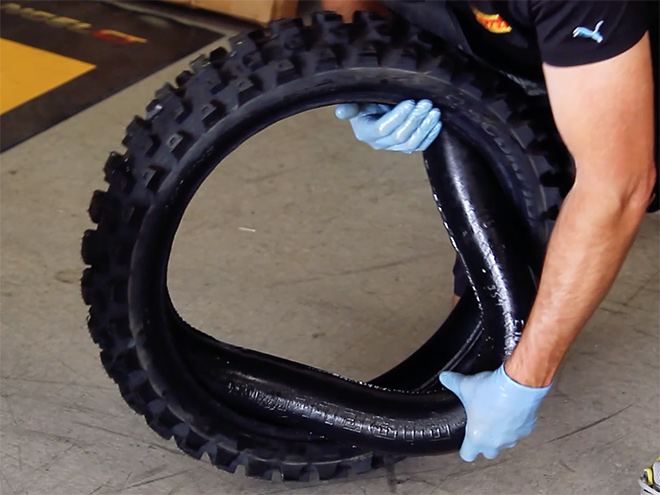
If your tire pressure is too high, you may notice a loss of grip on loose terrain where the tires spin more than they should.
Another way to determine the correct tire pressure is the “rim clean.” Right on the edge of the shiny aluminum tire rim where it meets the tire, you’ll see a slight shinier ring around the edge. The shiny area is from the tire rubbing on the rim. This is the rim clean. Most people recommend that this shiny area should be 3-4mm to determine a perfect tire pressure. If the rim clean is too large, increase the tire pressure. Too small? Decrease it.
Another thing to look for is the PSI change as altitude and heat change. Check your tire pressure at the start of your ride, then go out and ride for 30 minutes and immediately check your tire pressure again when you stop. You may see a difference of an increased 3-4 psi from the heat of the tire. If this is the case, you may want to lower your tire pressure at the start of your ride.
Also, because of different power transfers in four strokes vs two strokes, you may want to slightly increase tire pressure in the front tire on a four stroke.
A good way to know if it’s time to look at replacing your tires is when the little knobbies on the sides start to split or break away. At this point, your tire will start to have less traction in the corners and the tire as a whole is not as thick so you’ll be more likely to experience flats.
When buying a bicycle for themselves, many do not even think about the fact that the convenience and comfort when riding it is achieved by properly selected tire pressure.-Step-2.jpg/aid1501689-v4-728px-Ride-a-Dirt-Bike-(the-Basics)-Step-2.jpg) The service life of the bicycle, the speed of riding, the degree of tire wear, safety, control of the two-wheeled friend depends on how the wheels are inflated.
The service life of the bicycle, the speed of riding, the degree of tire wear, safety, control of the two-wheeled friend depends on how the wheels are inflated.
Many cyclists believe that inflating the tires is only necessary for a good bike ride. However, flat tires have a wider area of contact with the road, which means that grip will be better, but it will be very difficult to accelerate to a speed of 30-35 km / h on such tires.
When inflating your tires, you should always consider the type of terrain or surface you will be driving on. If the walk is supposed to be on an asphalt road, the tire pressure of the bicycle should be close to the maximum allowable value. Elastic wheels on a flat surface will provide a smooth rolling and high speed of movement.
For cross-country riding with unpaved paths, it is better to set the tire pressure to medium tolerable, so that you can ride long distances in comfort and convenience. At high pressure, the grip of the wheel with the road will be minimal, respectively, all holes, pebbles, and bumps on the road will be sensitive. And with flat tires, the likelihood of damage to the wheel or puncture of the chamber increases.
At high pressure, the grip of the wheel with the road will be minimal, respectively, all holes, pebbles, and bumps on the road will be sensitive. And with flat tires, the likelihood of damage to the wheel or puncture of the chamber increases.
In order to protect yourself on the road, as well as to keep the bike or its individual parts intact, you need to know exactly the lower and upper limits of permissible values, to what pressure the bicycle wheels can be pumped.
Information about tire pressure gives you an advantage when cycling:

Forget the old "grandfather" way to check the wheel with finger pressure. No need to rely on tactile sensations, trying to feel with your hand the degree of rubber penetration on the tire. The air leaves the wheel gradually, through the pores in the rubber. Within 2-3 weeks, the pressure decreases by 0.1-0.2 atmospheres, but you cannot determine this with your fingers. The exact value at any time will help determine the pressure gauge that every cyclist should have in his arsenal. With its help, it is simple, with a minimum error, the level of pressure in bicycle tires is measured. A pump with a pressure gauge (floor or manual) will become an indispensable tool for cyclists.
There are three standard values in which bicycle tire pressure is measured.
kPa = 14.504 PSI
All these units are used to some extent - in different countries, by different manufacturers. For residents of Russia and the post-Soviet space, the change in bars is more familiar, since this unit is clearly associated with the pressure of the 1st Earth's atmosphere at ocean level. In America and Western Europe, a popular unit is PSI, as they actively use pounds and inches in measurements. Pascals are the least used unit of measurement, but the most modern. Some bicycle manufacturers write data on the wheels about the allowable pressures in all three systems.
For residents of Russia and the post-Soviet space, the change in bars is more familiar, since this unit is clearly associated with the pressure of the 1st Earth's atmosphere at ocean level. In America and Western Europe, a popular unit is PSI, as they actively use pounds and inches in measurements. Pascals are the least used unit of measurement, but the most modern. Some bicycle manufacturers write data on the wheels about the allowable pressures in all three systems.
Manufacturers indicate on the sidewall of the tire how many atmospheres to pump the bicycle wheels. Specifies the range within which the owner of the "iron horse" determines the desired values, depending on the specific factors of riding his bike. Values in the range are labeled from min to max, in two or all three dimensions. Numbers up to 10 are atmospheres (or BAR), tens-hundreds are PSI, and six-digit values \u200b\u200band with the prefix “k” / kilo are Pascals.
When inflating a tire, you must strictly follow the manufacturer's recommendations and try not to go beyond both the minimum and maximum pressure levels indicated on the tire.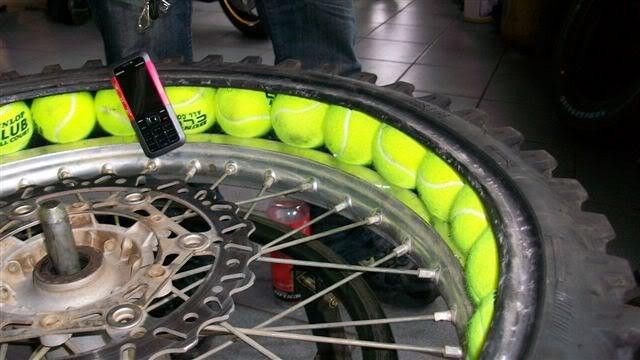 Moreover, it is better to leave a small margin of 0.2-0.5 BAR, both in one direction and in the other, so that the tire does not burst.
Moreover, it is better to leave a small margin of 0.2-0.5 BAR, both in one direction and in the other, so that the tire does not burst.
The pressure in the wheel is kept by the tire, not the tube, so there is no single standard for its value. There are several significant factors that determine how much you need to pump the wheels on a bicycle.
Tire type is determined by the surface of the track that the cyclist will predominantly ride on. Accordingly, the level of inflation of the bicycle wheel will be different. There is a direct dependence on the roughness of the tread and the width of the wheel - the more lugs and the wider the wheel, the lower the pressure should be. Empirically, cyclists quickly determine how many atmospheres should be in the tires of their bicycle
Many cyclists do not think about the fact that air temperature affects the pressure level in bicycle tires. From the course of school physics, we recall that when heated, bodies expand. This means that in hot sunny weather, the pressure inside the air chamber will increase without additional pumping. Conversely, on cold winter days, a decrease in tire pressure is quickly felt due to low temperatures. So, when going for a bike ride in the cold season, the pressure indicators need to be adjusted a little higher than usual, and in the summer heat, let the air out a little. It is worth noting that when going on a bike ride, you should always take into account the weather conditions.
From the course of school physics, we recall that when heated, bodies expand. This means that in hot sunny weather, the pressure inside the air chamber will increase without additional pumping. Conversely, on cold winter days, a decrease in tire pressure is quickly felt due to low temperatures. So, when going for a bike ride in the cold season, the pressure indicators need to be adjusted a little higher than usual, and in the summer heat, let the air out a little. It is worth noting that when going on a bike ride, you should always take into account the weather conditions.
It is important to consider the load on the bike created by the weight of the rider, especially the fact that most of it is on the rear wheel. Therefore, the degree of its pumping should be slightly higher than the front, the optimal difference is 10%.
To calculate the optimal tire pressure for a bicycle, given the weight of its rider, you can use the table:
Rider weight (kg) Pressure (atmosphere) Pressure (PSI)
The nature, riding style and type of bicycle also affect tire pressure. Buyers who prefer an active pastime often opt for mountain bikes with 26-inch wheels, which ride well both on city streets and in rough terrain.
To understand to what pressure to inflate the wheels of a bicycle, it is necessary to take into account the features of both the bike itself and other, at first glance, weightless factors. For example, weaving threads on a tire, rim thickness, driving style. The likelihood of a tire coming off a wide rim is much less than a narrow rim, because a wider rim will hold the tire better than a thin one. Mountain biking already by its name suggests the presence of a difficult surface on the track, with possible obstacles and bumps. The driving style is more aggressive than on a smooth, calm trajectory, it obliges you to increase the tire pressure to a level slightly less than the upper limit.
The diameter of the wheel will also affect the selection of the optimal pressure value, since the larger it is, the higher the volume of air pumped will be.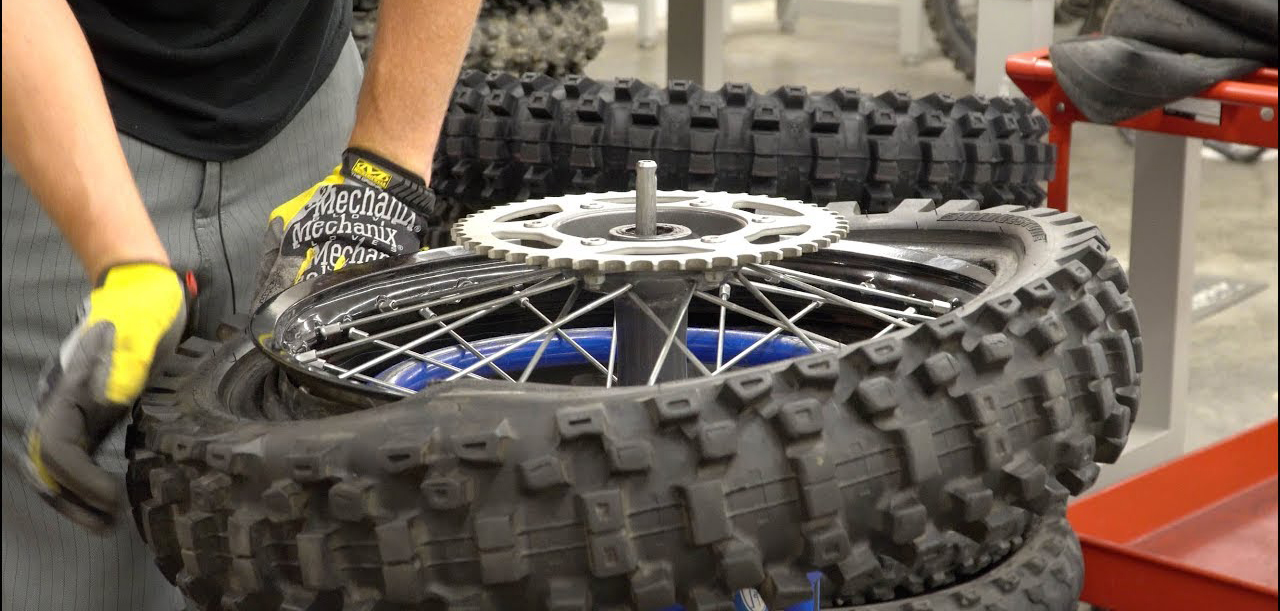 However, for mountain bikes it is not so important whether the wheel diameter is 26 or 29 inches, it is much more necessary to pay attention to the parameters of the rider's weight and the type of track.
However, for mountain bikes it is not so important whether the wheel diameter is 26 or 29 inches, it is much more necessary to pay attention to the parameters of the rider's weight and the type of track.
There are no hard and fast rules about how much you need to inflate the wheels on your bike. There is common sense, experience, practice. Manufacturers can recommend certain values, but only the owner himself will determine exactly which road he will ride, in what weather conditions he will drive, take into account his weight parameters or not. The decision, what pressure in the wheels will be ideal, is sure to be found.
A bicycle is a well-thought-out and reliable device. But with improper operation, even the highest quality of its elements and systems can fail faster than it would happen naturally. Last but not least, it concerns the wheels.-Step-6Bullet1.jpg/aid1501689-v4-728px-Ride-a-Dirt-Bike-(the-Basics)-Step-6Bullet1.jpg) For example, not only the comfort during rides, but also the life of the tires will depend on how much the pressure in the chambers of the bike corresponds to a certain norm .
For example, not only the comfort during rides, but also the life of the tires will depend on how much the pressure in the chambers of the bike corresponds to a certain norm .
If you constantly ride on wheels that are less than optimal, chances are that cracks have already formed on the sidewalls of your tires. This usually leads to their premature erasure. Excessively high pressure increases the risk that the tire will simply burst at the most inopportune moment.
Large selection of bicycles. We will deliver Merida bicycles to your region. Best price guarantee.
This is a controversial question, the answer to which depends on many factors . First of all, this is the intended terrain on which you plan to ride and the "profile" of the bike. High pressure is preferable if you're riding on tarmac as it gives you excellent rolling, while low pressure gives you solid traction on rough terrain. The style of riding and the weight of the cyclist also matter.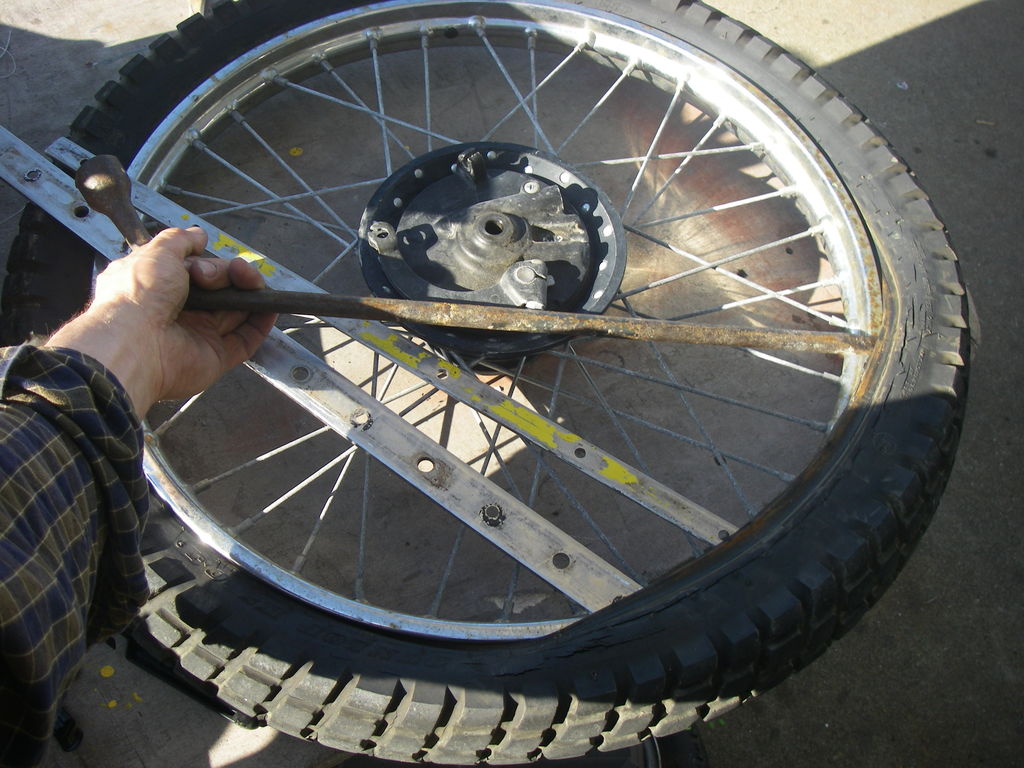
Tire manufacturers usually indicate the limits within which the cyclist can vary the inflation of the wheels . In our country, pressure is usually measured in atmospheres (at). This value is approximately equal to such a unit as Bar, which is common in Europe. On American tires and products intended for the American market, the allowable pressure is indicated in Psi.
Stealth bikes available. Big choice. Best price guarantee! Delivery to regions.
Some average tire pressure for a road bike designed for riding on good, smooth roads is 6.46 - 9.18 atmospheres. For a mountain bike, this figure varies from 2.38 to 4.08 atmospheres. For off-road driving, the optimal pressure will be from 2.38 to 3.26 atmospheres.
As for the variation within the “limits of what is permitted”, in summer it is advisable to adhere to the lower limit so that the air in the chambers, heating up and expanding, does not damage it. In winter, on the contrary, a chamber pumped up to the upper limit will allow the treads on the tires to adhere more tightly to the surface. The pressure in the chambers must also be correlated depending on the rider's weight . Experts believe that approximately 1% should be added to the average value based on each kilo of cyclist weight over 50.
The pressure should also depend on the type of rubber . So, slicks or semi-slicks need to be pumped up almost to the maximum, because they are designed specifically for the maximum diameter. In hot weather, they are allowed to be under-inflated by about a quarter. Cross-country tires are 2-2.3 inches wide and can withstand three to four bar tire pressure. Extreme tires need to be inflated to about average, but for each descent or trick, this value must be varied subtly.
You can measure the pressure in the bicycle chambers using the pressure gauge, on which the atmosphere scale is located. It can be bought separately, or together with a bicycle pump, for example, at VeloSklad. It is also possible to measure the pressure manually, but it is quite difficult to do this, since even with a slight inflating of the chambers, they are already poorly “palpable” with your fingers. It is believed that if the chamber does not shrink under the fingers, then the pressure is normal. But this is an inaccurate method, since everyone's hand strength is different. This art is available, perhaps, only to really experienced cyclists. More accurate data will be told to you at the nearest bicycle service or service station. Experienced cyclists suggest "remember", how many times you need to pump the chamber with your pump to get the optimum pressure.
It is also possible to measure the pressure manually, but it is quite difficult to do this, since even with a slight inflating of the chambers, they are already poorly “palpable” with your fingers. It is believed that if the chamber does not shrink under the fingers, then the pressure is normal. But this is an inaccurate method, since everyone's hand strength is different. This art is available, perhaps, only to really experienced cyclists. More accurate data will be told to you at the nearest bicycle service or service station. Experienced cyclists suggest "remember", how many times you need to pump the chamber with your pump to get the optimum pressure.
It is advisable to regularly inflate the wheels and control the pressure in the chambers, since air is lost not only through the nipple, but also through the rubber itself. Road bikes and sports bikes need to be pumped up before each ride, road bikes need it at least once a week, mountain bikes once every two weeks, and city bikes no more than once a month.